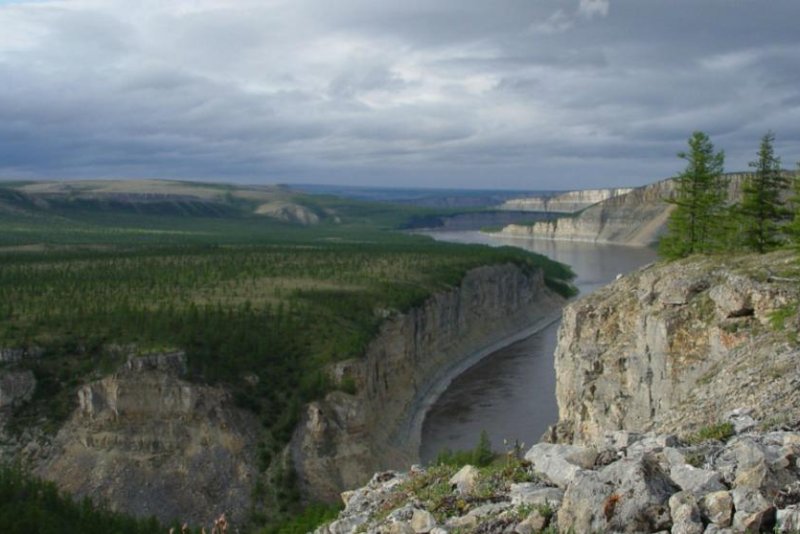Scientists studied isotope ratios in ancient limestone layers to trace changes in the oxygen levels in Earth's oceans during the Cambrian period. Photo courtesy of Artem Kouchinsky
Sept. 10 (UPI) -- New research suggests animals had a significant influence on the planet's shifting oxygen levels.
Scientists have long studied the relationship between oxygen levels and the evolution of life on Earth, but whether animals directly influenced oxygen levels or simply reacted to changes in environmental patterns has remained unclear.
"For the first time, we have succeeded in measuring 'Earth's heartbeat' -- understood as the dynamics between the oxygen level and the productivity on Earth," Tais Wittchen Dahl, an associate professor at the University of Copenhagen's GLOBE Institute in Denmark, said in a news release. "We have found that it is not just the environment and the oxygen level that affect the animals, but that, most likely, the animals affect the oxygen level."
To better understand prehistoric changes in oxygen levels on Earth, scientists analyzed ancient limestone layers dated to the Cambrian explosion, which occurred between 540 million and 520 million years ago. By measuring the ratio of uranium-238 to uranium-235 in the limestone, scientists estimated the shifting levels of oxygen in the planet's oceans during the Cambrian period.
The latest findings suggest that during the Cambrian period, the planet's oceans experienced dramatic fluctuations between two extreme conditions, an excess and a dearth of oxygen.
During the Cambrian explosion, marine animals evolved. New species began to move across the ocean floor, form shells and eat one another. The development caused phosphate in the water to become trapped in the ocean's muddy floor. Phosphate fuels algae growth, and algae performs photosynthesis, producing oxygen.
'Less phosphate produced fewer algae, which over geological time led to less oxygen on Earth, and due to the oxygen-poor conditions, the larger animals moved away," Tais Wittchen Dahl said. "Once the animals were gone, the oxygen level could go up again and create favorable living conditions, and then the process repeated itself."
In effect, the explosion of animals scurrying across and burying themselves in the mud helped curtail the increase in oxygen levels that helped spur the Cambrian explosion. In other words, the rapid evolution of animals during the Cambrian period triggered biochemical changes that eventually slowed the Cambrian explosion.
"It is entirely new that we can render it probable that such dynamics exist between the animals and the environment," Tais Wittchen Dahl said. "And it is a very important discovery in order to understand the mechanisms that control the oxygen level on Earth."
Researchers suggest their findings -- published this week in the journal PNAS -- could help scientists search for the effects of animal life on the oxygen levels of distant planets.
"Oxygen is a biomarker -- some of what you look for when you look for life elsewhere in the universe. And if life in itself helps control the oxygen level, it is much more likely that there will also be life in places where oxygen is present," said Tais Wittchen Dahl.















